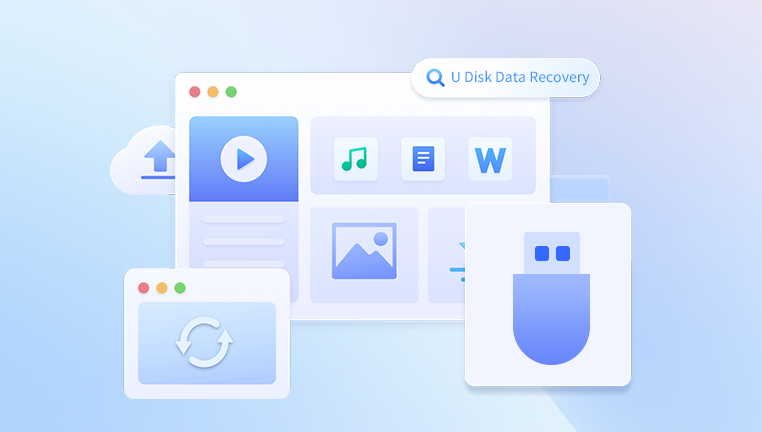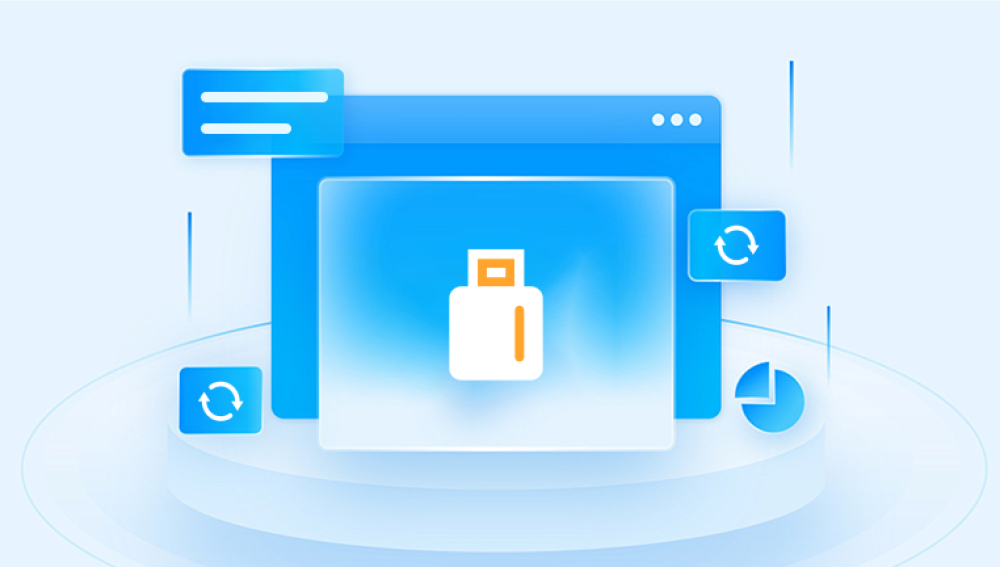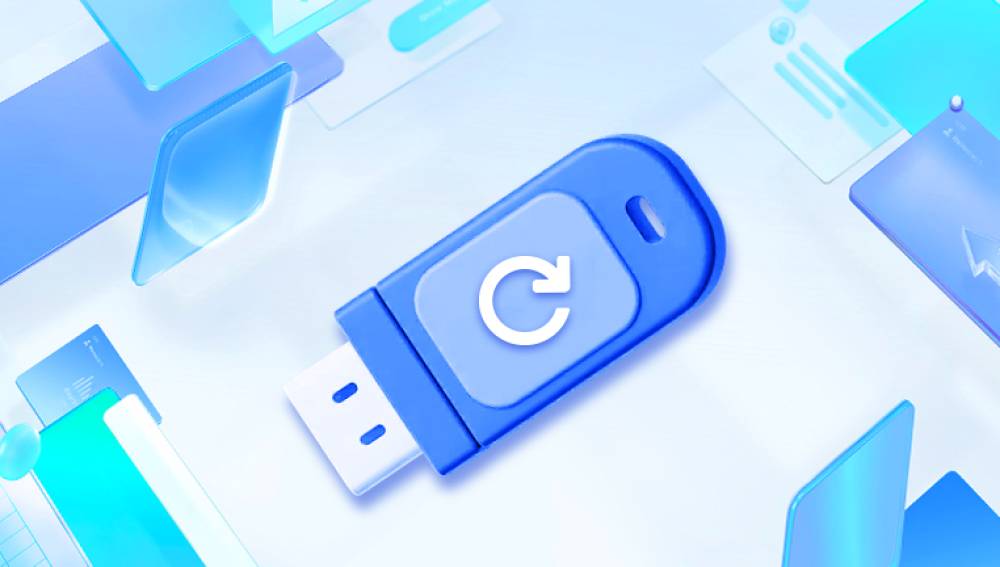USB flash drives are indispensable in our daily digital lives. We use them to store and transfer essential files such as documents, photos, videos, and software. However, USB drives are not immune to problems. One of the most distressing issues users face is file corruption. Whether it’s due to improper ejection, malware, hardware failure, or file system errors, corrupted files can disrupt your workflow and lead to potential data loss.
Chapter 1: USB File Corruption
What Is File Corruption?
File corruption occurs when a file's structure is altered in a way that makes it unreadable or unusable. The data may be partially or completely damaged, preventing software from recognizing or opening the file.

Common Causes of File Corruption on USB Drives
Improper removal/ejection from the computer
Power failure during data transfer
Malware or virus infection
Physical damage to the USB device
Bad sectors on the flash memory
Using the USB drive on incompatible systems (e.g., switching between Windows and macOS without proper formatting)
Symptoms of Corruption
Files not opening or displaying errors
Strange characters or filenames
Files missing or showing as 0 bytes
Operating system prompts to format the drive
Read/Write errors when accessing data
Chapter 2: Initial Checks Before Recovery
Before diving into recovery methods, perform the following checks:
1. Try Another USB Port or Computer
Sometimes, the issue lies with the port or system rather than the USB. Plug the USB into a different port or try another computer.
2. Use Disk Management (Windows) or Disk Utility (macOS)
Check if the system recognizes the USB drive.
Look for signs like incorrect file systems or unallocated space.
3. Enable Hidden Files
Corruption might cause files to become hidden.
In Windows File Explorer: View > Show > Hidden items.
On macOS: Press Command + Shift + . in Finder.
4. Run Antivirus Software
Scan the USB for viruses or malware, which may corrupt or encrypt files.
Chapter 3: Built-In Methods to Restore Corrupted Files
Method 1: Use CHKDSK Utility (Windows Only)
CHKDSK scans and fixes file system errors and can recover lost file fragments.
Steps:
Insert your USB drive.
Open Command Prompt as Administrator.
Type:
bash
CopyEdit
chkdsk X: /f
Replace X with your USB drive letter.
Let the process complete. CHKDSK will attempt to fix any errors.
What It Fixes:
File system errors
Bad sectors
Lost file chains
Drawbacks:
May rename files to generic names (e.g., FILE0001.CHK).
Doesn’t work well with deeply corrupted drives.
Method 2: Use Windows File History or Previous Versions
If File History is enabled, you might recover older, uncorrupted versions.
Steps:
Right-click the file or folder > Properties > Previous Versions.
Select a version and click “Restore.”
Note:
This method only works if File History or System Protection was turned on prior to the corruption.
Method 3: Run SFC /Scannow
While SFC (System File Checker) is primarily used for system files, it can occasionally help detect logical file issues.
Steps:
Open Command Prompt as Administrator.
Type:
bash
CopyEdit
sfc /scannow
Press Enter and wait for the scan to finish.
Chapter 4: Using File Recovery Software
Drecov Data Recovery is a software application designed to retrieve data that has been accidentally deleted, lost due to formatting, corrupted by malware, or rendered inaccessible because of file system errors or device failure. It supports a wide range of storage devices including hard drives, SSDs, USB flash drives, SD cards, and more. The software emphasizes ease of use, offering an intuitive user interface and a streamlined recovery process.
Key Features
One of Drecov Data Recovery’s strengths is its broad compatibility with different file types and storage media. Whether you're recovering documents, photos, videos, audio files, or even emails, the software is equipped to handle the task. It supports popular file systems like NTFS, FAT32. exFAT, and HFS+.
Notable features include:
Quick and Deep Scan Modes: Quick Scan rapidly locates recently deleted files, while Deep Scan searches the entire drive sector by sector to uncover more hidden or damaged data.
File Preview: Users can preview recoverable files before initiating restoration, ensuring they recover the correct items.
Filter and Search Tools: Easily locate specific files using keyword searches or filter by file type, size, or date modified.
Formatted Drive Recovery: Even if the drive was accidentally formatted, Drecov Data Recovery can retrieve most of the data.
Partition Recovery: Lost or deleted partitions can also be scanned and recovered, which is helpful when dealing with partition-related errors.
Chapter 5: Preventing USB File Corruption
Best Practices
Always eject USB drives safely.
Avoid unplugging during file transfer.
Use reputable antivirus software.
Do not store critical data on low-quality or counterfeit drives.
Backup regularly using cloud storage or external drives.
Format drives properly before switching operating systems.
Use File Systems Carefully
Use FAT32 for compatibility, exFAT for large files, NTFS for Windows-only setups.
For macOS, use APFS or HFS+.
Chapter 6: When to Format the Drive
Sometimes, the USB drive becomes unreadable or throws a format error:
"You need to format the disk in drive X: before you can use it."
Should You Format?
Only if:
You’ve already recovered the files.
The file system is unrecoverable.
You're planning to reuse the USB and accept the data loss.
How to Format Properly (Windows)
Right-click USB drive > Format.
Choose file system (exFAT or FAT32).
Uncheck “Quick Format” for a thorough clean.
Click “Start.”
On macOS
Go to Disk Utility.
Select USB drive > Erase.
Choose file system and confirm.
Corrupted files on a USB drive can be frustrating, but they don’t have to be the end of the road. Whether you're facing logical corruption, unreadable formats, or missing data, there are multiple recovery paths available. Built-in tools like CHKDSK and SFC offer first-line solutions, while powerful third-party recovery programs like Recoverit and Recuva provide deeper restoration capabilities.
The key to successful recovery is to act fast, avoid writing new data to the USB, and use trusted recovery solutions. In cases of physical damage, professional services are your best bet. Once you've restored your files, be sure to implement preventive strategies such as safe ejection, regular backups, and virus protection to minimize the risk of future corruption.




